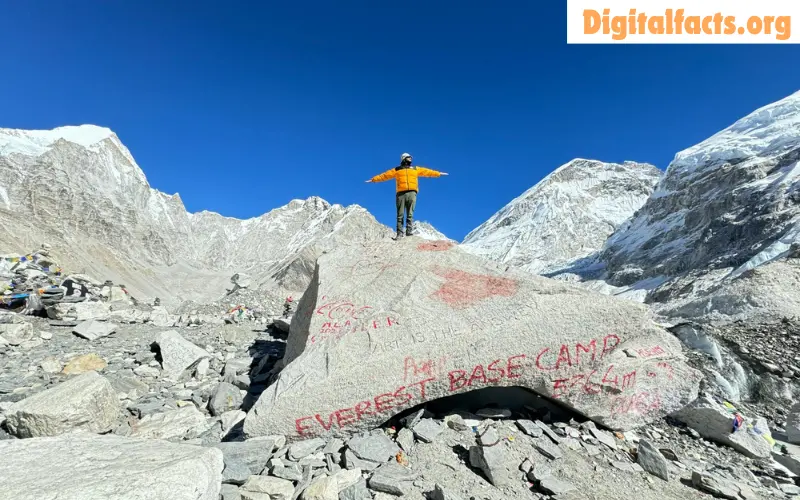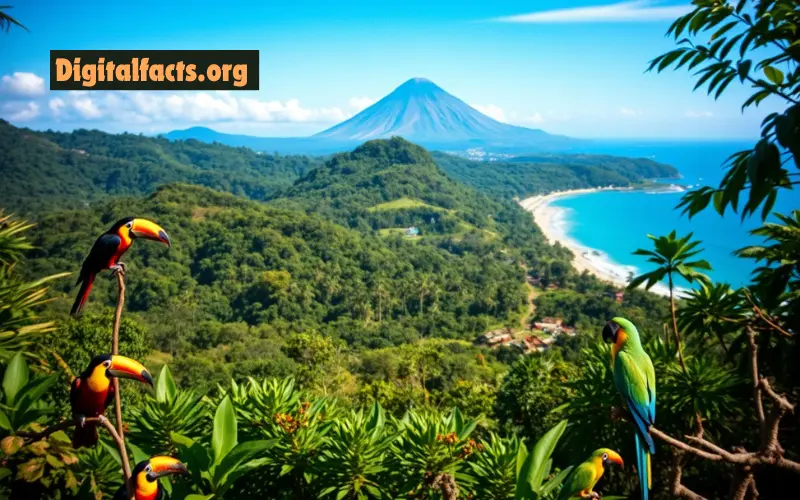One of the most beloved trekking routes in the world is the Everest Base Camp Trek. Nestled within the Himalayas’ heart, it is a trail of natural charm, cross-cultural variety, and refreshing thrill that leads to the Everest base camp, the highest of all mountains. If you want to learn how to plan and execute the best trek of your life, read this complete guide. It includes all of the necessary information regarding preparations, trekking routes, cultural information, recommended trekking destinations, and tips for a successful journey.
Preparation for the Trek
Physical Fitness
Trekking to Everest Base Camp is difficult and requires a high level of physical strength. Sufficient training is required to prepare your body for lengthy periods of trekking at high altitudes. Long-distance trekking is difficult for most people, thus physical activity such as jogging, cycling, and swimming should be combined with leg exercises that need strength and power. This will help you to gradually increase your stamina and energy, allowing you to travel long distances without becoming fatigued or bored due to muscle soreness. Begin training at least three to six months before your journey.
Gear and Equipment
The proper gear is essential for a safe and comfortable hike. Here is a list of essential goods to carry:
- Clothing: Layering your clothes can help you adapt to shifting weather. Pack breathable base layers and insulating gear to keep you comfortable in the cold. You’ll also need a down jacket, thermal underwear, protective gloves, caps, and the best trekking socks available.
- Footwear: Before starting on the expedition, get durable, waterproof trekking boots that are properly fitted. Carry some excellent slippers or a pair of shoes for the evening.
- Backpack: Choose a light backpack with a capacity of 40 to 50 liters. Ensure it offers good back support and padded straps.
- Sleeping Bag: A four-season sleeping bag can handle temperatures as low as -10°C (14°F).
- Trekking Poles: Trekking poles give stability during descents, which reduces knee discomfort.
- Other Essentials: Sunglasses, sunscreen, lip moisturizers to keep them moistened against wind dryness, water bottles/hydration systems, headlamps, and basic first aid kits are all necessary.
Permits and Documentation
To trek to Everest Base Camp Trek, you will need two permits: the Sagarmatha National Park entry permission and the Khumbu Pasang Lhamu Rural Municipality permit. You can find them at the Monjo entry point or in Kathmadu. Furthermore, your passport must be valid for at least six months beyond your scheduled return date, and you should pack additional passport-sized photographs for such permits.
The Trekking Route
Day 1: Arrival in Kathmandu
Your journey starts in Nepal’s capital, Kathmandu. Spend the day acclimating, enjoying the city’s cultural attractions, and inspecting your equipments.
Day 2: Flight to Lukla and Trek to Phakding
The adventure begins with a spectacular flight from Kathmandu to Lukla, one of the world’s most difficult airports. The trek begins at Lukla (2,860m) with an easy descent to Phakding (2,610m), where you will spend the night.
Day 3: Phakding to Namche Bazaar
The route runs alongside the Dudh Koshi River, over suspension bridges wrapped with prayer flags. Following a tough climb, you will arrive in Namche Bazaar (3,440m), the Khumbu region’s primary trading hub. Stay here for two nights to adapt.
Day 4: Acclimatization Day in Namche Bazaar
The adaptation process is essential to avoiding altitude sickness. Spend the day exploring Namche Bazaar, seeing local markets, and hiking to the Everest View Hotel for your first view of Everest.
Day 5: Namche Bazaar to Tengboche
The trek continues with breathtaking vistas of Mount Everest, Lhotse, and Ama Dablam. After a tough hike, you will arrive in Tengboche (3,860m), home to the renowned Tengboche Monastery, the Khumbu region’s spiritual heart.
Day 6: Tengboche to Dingboche
You will climb to Dingboche (4,410m) after descending through forests of rhododendron and crossing the Imja Khola. This village provides another chance to acclimate and stunning views of the surrounding peaks.
Day 7: Acclimatization Day in Dingboche
Take a second day for adaptation in Dingboche. To enjoy panoramic views and help your body in acclimating to the altitude, hike up Nagarjun Hill (5,100m).
Day 8: Dingboche to Lobuche
The route passes through Alpine fields and the tributes to climbers who lost their lives on Everest as it progressively ascends to Lobuche (4,940m). The panoramas of Khumbutse, Pumori, Lingtren, and other peaks are magnificent.
Day 9: Lobuche to Gorak Shep and Everest Base Camp
This is the trek’s most thrilling day. You will continue to Everest Base Camp (5,364m) after arriving at Gorak Shep (5,170m). Standing at the foot of the highest peak in the world is an incredible experience, even though you cannot see the peak of Everest from base camp. Gorak Shep is the place to spend the night.
Day 10: Gorak Shep to Kala Patthar and Pheriche
Get up before sunrise to hike up Kala Patthar (5,545m) for the best dawn panoramas of Everest and the nearby peaks. After breakfast, make your way down to Gorak Shep and spend the night in Pheriche (4,371m).
Day 11-12: Return to Lukla
Travel back the same route through the breathtaking scenery of the Khumbu region, spending the night in Namche Bazaar and subsequently Lukla. Celebrate your trek’s completion with your fellow trekkers and guides.
Day 13: Flight to Kathmandu
Fly back to Kathmandu to catch your breath and reflect on your fantastic adventure. Spend the day exploring the city or shopping for souvenirs at local markets.
Day 14: Departure
Take away priceless memories and a deep admiration for the Himalayas and Sherpa culture as you depart from Kathmandu.
Cultural Insights
Sherpa Culture
Sherpas, who live in the Khumbu region, are recognized for their climbing skills and great hospitality. Visiting monasteries, socializing with people, and attending rituals can provide significant insights into their culture and way of life.
Tibetan Buddhism
Tibetan Buddhism had a significant impact in this area. Along the hiking route, there are numerous monasteries representing various nationalities; also, prayer wheels, which are spinning machines packed with Buddhist mantras, and mani stones can be found on most trekking pathways. To respect local traditions, avoid touching sacred things and move around those areas in a clockwise motion.
Local Cuisine
Enjoy Sherpa cuisine such as dal bhat (lentil soup with rice), momo (dumplings), and yak cheese. Some teahouses along the way serve a variety of meals, however it is best to choose vegetarian options to avoid any difficulties that may emerge after eating.
Tips for a Successful Trek
Acclimatization and Hydration
The process of adapting is very important so that altitude sickness may be avoided. One should adhere to the ‘climb high, sleep low’ principle and drink between three to four liters of water daily while shunning alcohol and caffeine.
Health and Safety
Always keep a first-aid kit with pain relievers, stomach medications, and high altitude sickness medications on hand. Emergency evacuation and high-altitude trekking plans should also be included in your trip insurance policy for your protection.
Respect the Environment
Trekking in the Himalayas necessitates some ethical considerations, as this environmental zone is quite delicate. Water should be taken from a reusable container, and plastic bags that cannot be reused should be avoided in order to reduce the amount of such waste; additionally, they should all be transported to designated areas where they may be properly disposed of.
Hiring a Guide and Porter
If you embark on this trek on your own, you miss the chance of enriching your trip with the local knowledge that comes in handy when it comes to hiking such kinds of mountaineering areas around here. Local guides will help explain everything about the culture and geography of the area. The porters will make it easier for you to carry little luggage, which enables you to appreciate every moment of the expedition.
Conclusion
It’s an adventure besides breathtaking scenery that stands in stark contrast to the humdrum life we lead today. The successful completion is achieved through enough foresight, respect towards the sacred customs, and safeguards. At the foot of Mt. Everest you can see not only the highest summits on Earth but also feel what it means to be human – it is about resilience and beauty. Unforgettable moments will stay forever in memory regardless of whether you are a person who has been hiking all their life or just begun to do so. Mountains Treks Nepal Pvt. Ltd. greets all of you with gratitude since we have planned a methodical itinerary for the Everest Base Camp Trek.
You can explore more travel Information




One thought on “The Ultimate Guide to Everest Base Camp Trek”